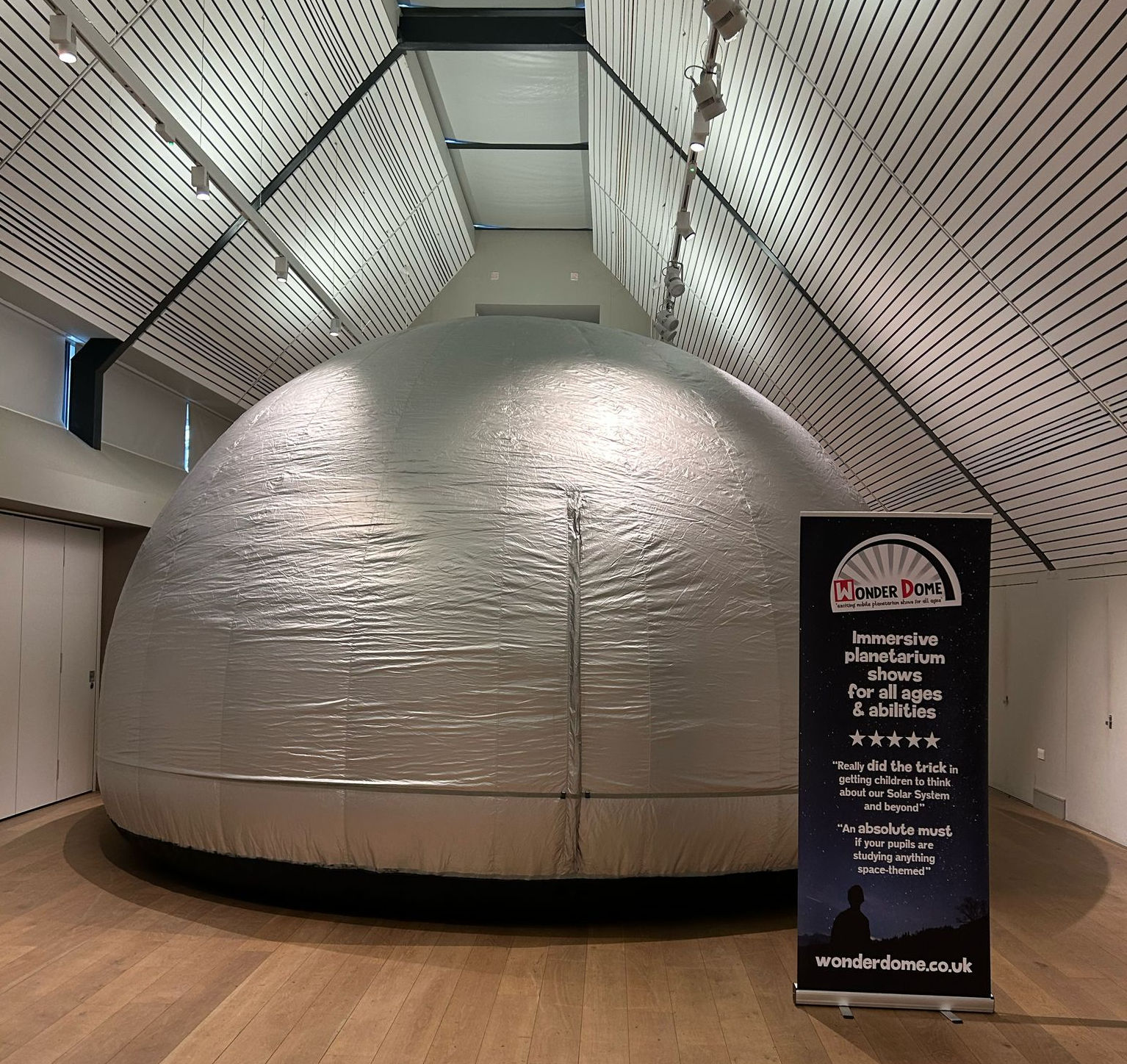Mobile Planetaria
In my last blog, I looked at the development of the planetarium.
Planetaria have now been around for exactly 100 years.
Last time we reviewed a century of fixed planetaria in dedicated buildings.
Now we’ll look at the rise of mobile planetaria and travelling star shows.
Why a mobile planetarium?
A mobile planetarium like Wonderdome offers a unique experience, particularly for schools.
No need for transport or teaching staff going out of school.
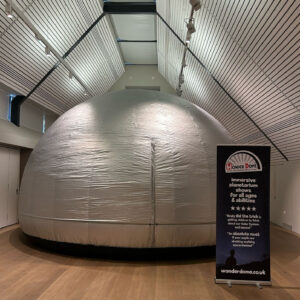
Wonderdome mobile planetarium
Wonderdome sets up in the school hall.
We’re ready at the start of the school day.
Our shows are naturally geared to the school curriculum.
We can tailor the shows for any year group or special project.
Each class has their own special presentation.
But we also offer enhancement of the curriculum.
This is mainly through childrens’ questions.
In our mobile planetarium we reveal the wonders of the universe.
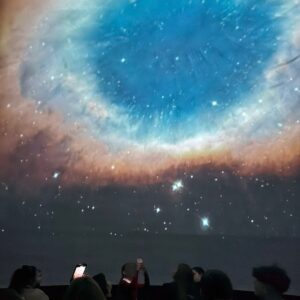
Wonderdome planetarium: a dying star.
Every show has a live narration by the presenter.
And there is time for Q & A to follow the interests of the children.
The mobile planetarium really does bring the universe to you.
The original travelling planetarium
The first transportable planetarium dates back to 1948.
The Museum of Science in Boston, USA, devised a travelling astronomy show.
It came at a time between the old museum closing and a new one opening.

Transportable planetarium, Boston Museum Science Museum.
The planetarium was made of wood and 5.5 metres across.
It could hold up to 50 people.
It had a Spitz star projector with twelve flat sides.
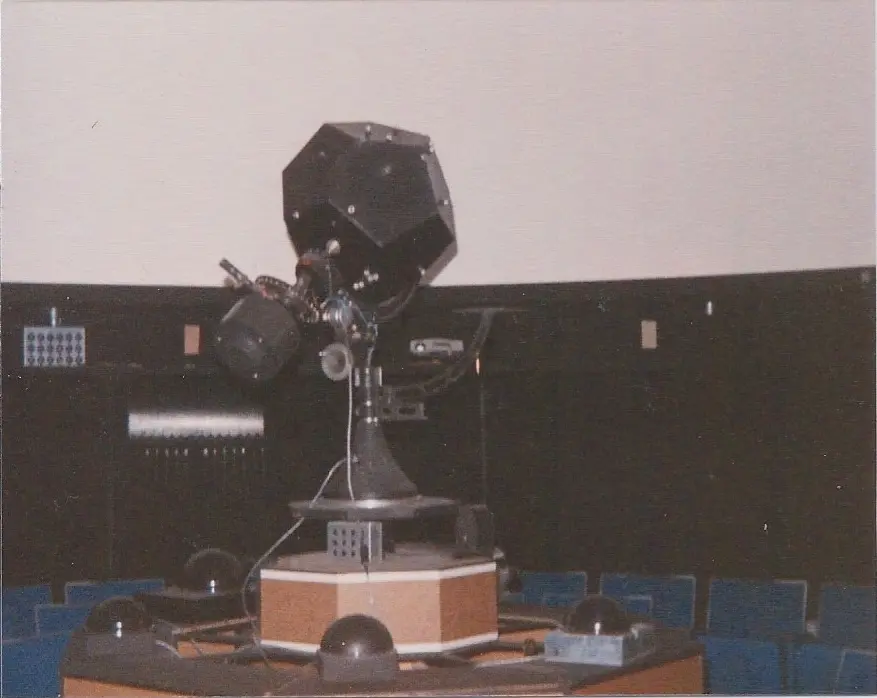
Early Spitz projector. Photo: Wikimedia Commons
The planetarium travelled across New England, taking the stars to over 6000 people.
But the wooden structure was bulky to transport and time-consuming to set up.
A more portable, easily set up version was required.
It came along in 1977.
Starlab: the first inflatable dome
In 1977, Philip Sadler was a middle school teacher in Lincoln, Massachusetts.
His students said that they would love a planetarium in their school.
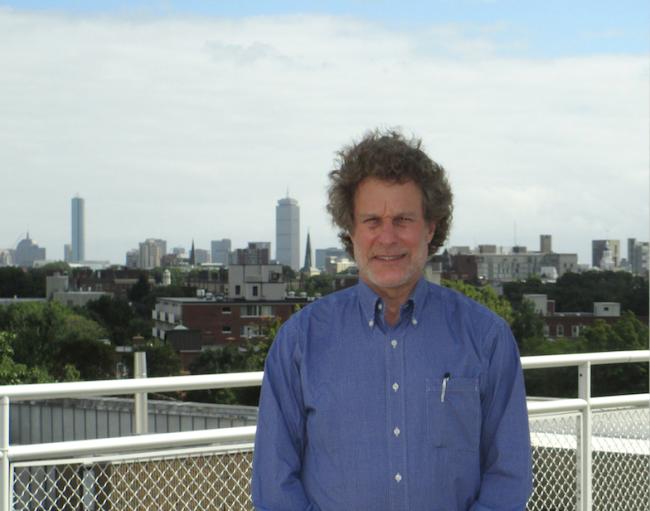
Philip Sadler in 2014, award winner from the International Planetarium Society
Sadler’s school had a tennis court with an inflatable cover.
That was his inspiration.
He designed an inflatable planetarium dome.
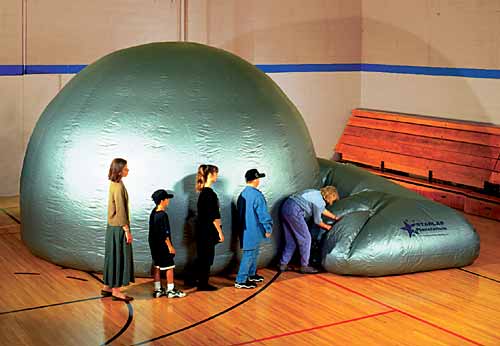
Original Starlab: Washington County, USA
Starlab dome
The dome design was brilliant.
It was lightweight and quick and easy to set up and take down.
A lightweight fan provided the air input to keep the dome inflated.
The deflated dome could be packed into a small bag.

Starlab showing inflation tube and fan: Lincoln Public Schools, USA
Starlab had a small inflation tube attached to the fan.
The entrance was a larger tube which folded closed automatically behind people.
The audience stooped to walk through, though most children enjoyed crawling in.
Starlab projector
The next inspired design was the planetarium projector.
It had to be relatively cheap, lightweight and durable.
Sadler’s design was a cylinder made from photographic film.

Starlab projector: Starlab
Spherical star projection is converted to a cylindrical form.
The star images are imprinted on flat sheets of film.
Finally the two sheets, sides and top, are glued together to make the cylinder.
Magnetic studs allow planet lenses to be attached to the cylinder.
Starlab developed several cylinders.
One shows stars, another the constellation images.
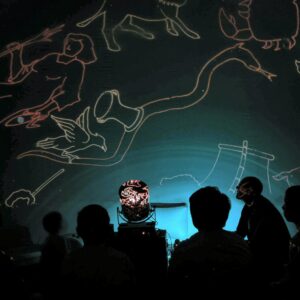
Constellation pictures, Starlab mobile planetarium.
The projector mechanism rotates the cylinder and changes brightness.
A tiny, super bright lamp provides the starlight.
The cylinder carry box acts as a projector stand.
Philip and his wife Jane run the Starlab company, Learning Technologies, from Somerville, MA.
A full account of their story can be found in an article in the Somerville Times.
It’s definitely worth a read.
My Starlab
In 1993, I left teaching and bought a Starlab from Learning Technologies.
It was one of the first mobile planetaria in the UK.
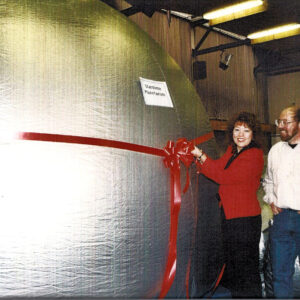
Stardome launch with Heather Couper at Sheffield Hallam University
The official opening was at Sheffield Hallam University.
Heather Couper, the TV and radio astronomer, kindly came along to conduct the ceremony.
It was a memorable day for me.
My career changed from science teacher to planetarium presenter.
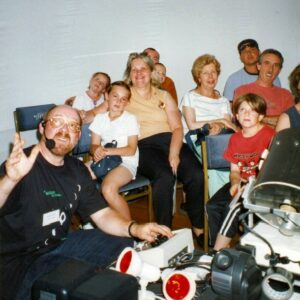
Dennis with Stardome at the Science Museum in London.
The current mobile planetarium
Mobile dome design has changed over the last 30 years.
Now domes from different companies have a variety of shapes and sizes.
But they retain the original Sadler concept of inflatable domes.
I changed my Starlab to a bigger dome made by the planetarium legend, Ray Worthy.
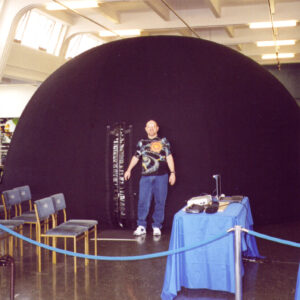
Stardome at London’s Science Museum, 1990s.
My old Starlab went to the Unizulu Science Centre in South Africa
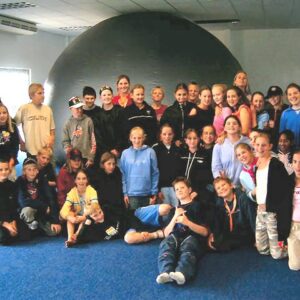
Stardome in South Africa: D. Ashton
Our Wonderdome models are typical of the modern dome.
All the equipment packs away on to a small trolley.
Wonderdome is a very portable planetarium!
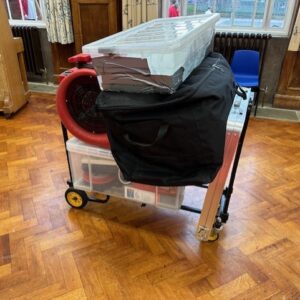
Wonderdome equipment packed onto the trolley.
Made of lightweight material, it has a simple zip entrance like a tent.
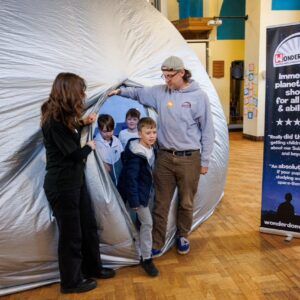
Wonderdome zip entrance and exit.
The Digital Mobile Planetarium
Like fixed planetaria, the first generation of mobile domes used optical projectors.
And like many fixed planetaria, they have now gone digital.
The optical projector is limited to the starry sky.
We see stars, planets and constellations.
Images were shown through slide projectors and later, video projectors.
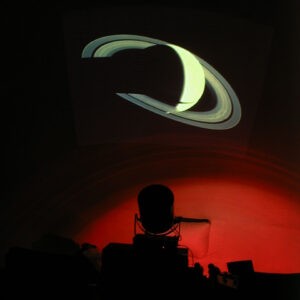
Stardome image using a slide projector, 1990s
Now digital projectors have replaced the optical machines.
They come in two main versions.
Both use a laptop PC or tablet to provide the video and images.
Our Wonderdome system uses a spherical mirror to project on to the dome.
The image source is a laptop PC or Mac linked to a conventional data projector.
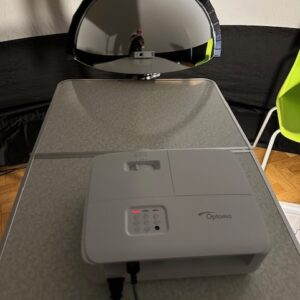
Wonderdome digital projection: projector and spherical mirror
The images and video are digitally warped to give the all-round projection.
One of my favourite sequences follows Apollo 17 on the Moon.
It’s as near as I will come to being an astronaut!
Other mobiles use a fisheye lens projector.
Again the images and video are warped, this time in a fisheye configuration.
Both systems provide 360 degree video presentations.
Mobile planetaria have joined their fixed counterparts in the digital revolution.
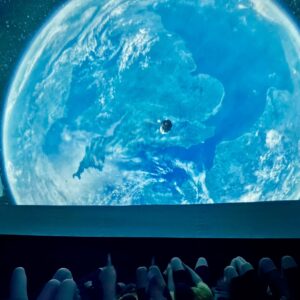
Soyuz spacecraft approaching the International Space Station:
ESA video in Wonderdome
In every show, I sit like the audience and watch cosmic wonders unfold.
We journey to the Moon then on through the Solar System.
Sometimes we travel from the Milky Way to the edge of the universe – and beyond.
And if there is something new in space, we can show it.
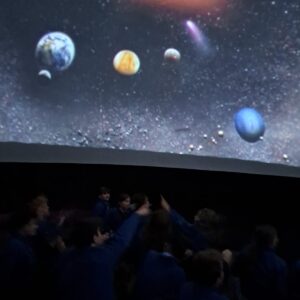
Wonderdome introductory video: the show begins!
The digital dome has revolutionised our planetarium shows.
But I must confess, as an astronomer and old planetarium presenter, I love the stars.
I still enjoy our Wonderdome night sky and showing youngsters what they can see from home.
A Wonderdome visit
The mobile planetarium visit provides a day of memorable cosmic magic.
If you have a connection with a school, please do consider a Wonderdome booking for the students.
And if you are running a science festival or event, Wonderdome will be a great attraction.
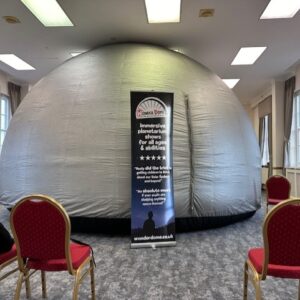
Wonderdome mobile planetarium at the Royal Navy Museum, Hartlepool
Almost 50 years on from Philip Sadler’s inspired idea, the mobile planetarium is itself a source of inspiration.
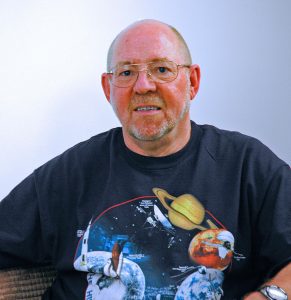
The author: Dennis Ashton is a Fellow of the Royal Astronomical Society and a Wonderdome presenter.
In 2024, Dennis received the Special Contribution award from the British Association of Planetaria.
Wonderdome now has 14 presenters, making us the largest – and best – mobile planetarium organisation in the UK.
Would you like more Astronomy news?
Do you want to hear about our upcoming public events?
Follow Wonderdome Portable Planetarium on Twitter / X and Facebook.
Or you can go at our website wonderdome.co.uk.

